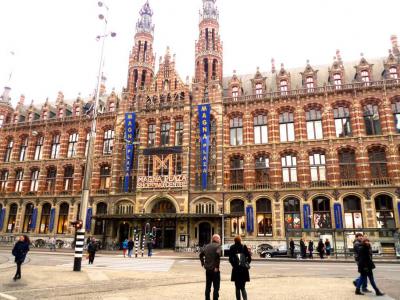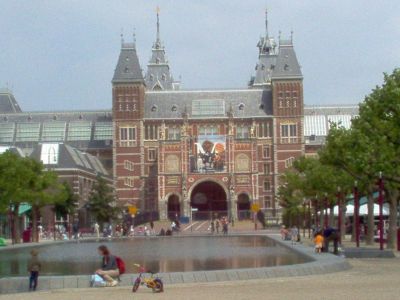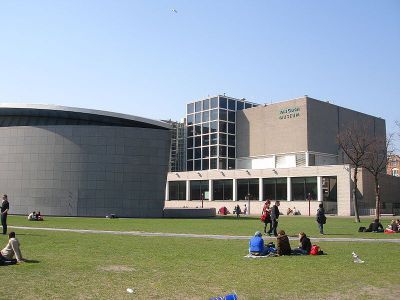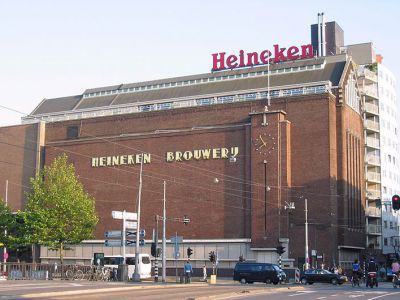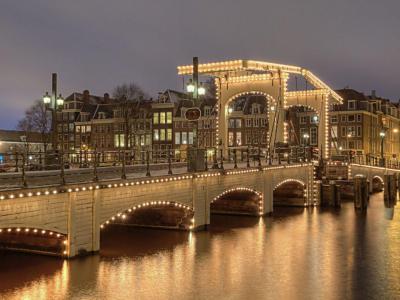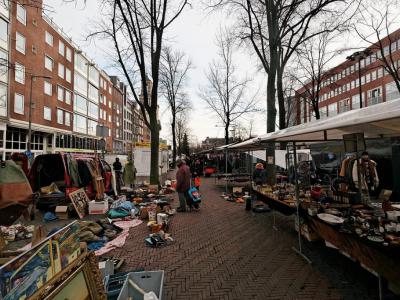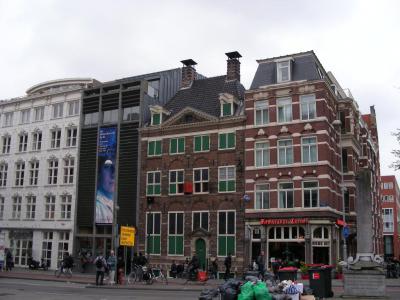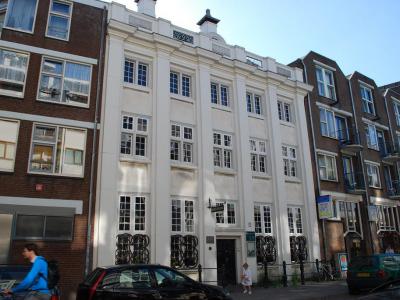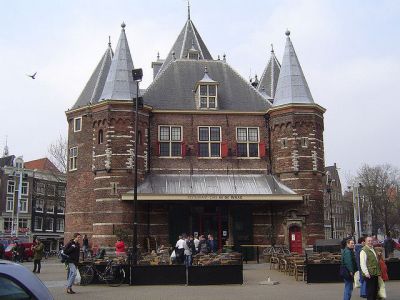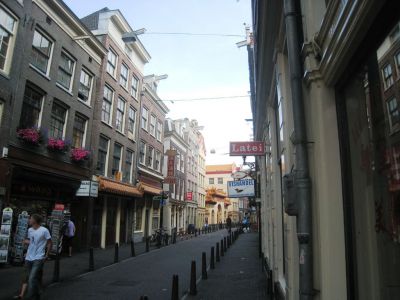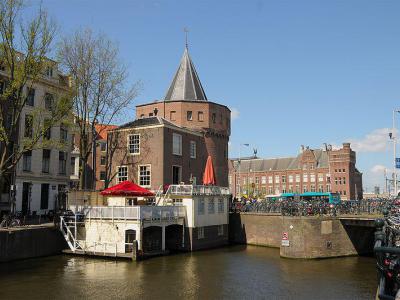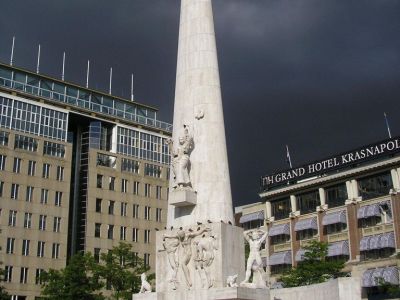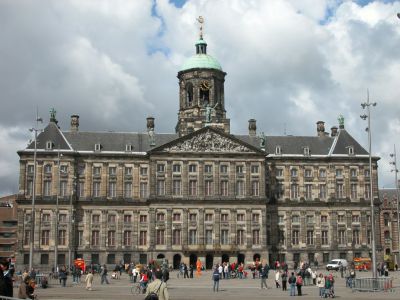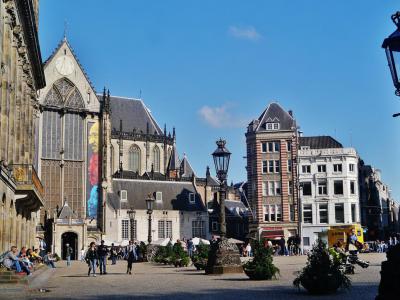Custom Walk in Amsterdam, Netherlands by t_starz_779d6 created on 2025-03-20
Guide Location: Netherlands » Amsterdam
Guide Type: Custom Walk
# of Sights: 14
Tour Duration: 4 Hour(s)
Travel Distance: 7.5 Km or 4.7 Miles
Share Key: Q9U5V
Guide Type: Custom Walk
# of Sights: 14
Tour Duration: 4 Hour(s)
Travel Distance: 7.5 Km or 4.7 Miles
Share Key: Q9U5V
How It Works
Please retrieve this walk in the GPSmyCity app. Once done, the app will guide you from one tour stop to the next as if you had a personal tour guide. If you created the walk on this website or come to the page via a link, please follow the instructions below to retrieve the walk in the app.
Retrieve This Walk in App
Step 1. Download the app "GPSmyCity: Walks in 1K+ Cities" on Apple App Store or Google Play Store.
Step 2. In the GPSmyCity app, download(or launch) the guide "Amsterdam Map and Walking Tours".
Step 3. Tap the menu button located at upper right corner of the "Walks" screen and select "Retrieve custom walk". Enter the share key: Q9U5V
1) Magna Plaza
Magna Plaza is a grand 19th-century edifice located behind the Royal Palace on Dam Square. Constructed between 1895 and 1899, it showcases a blend of Neo-Gothic and Neo-Renaissance architectural styles. The building was designed by Cornelis Hendrik Peters and has been listed as a national heritage site of the Netherlands since 1974.
The structure is notable for its elaborate brick exterior adorned with polychromatic brickwork and dressed stone around windows and doors. The roof is distinguished by several dormers, each topped with crow-stepped gables, contributing to its nickname "Perenburg" (or “pear-castle”) due to the pear-shaped crowns atop its towers.
Originally serving as Amsterdam's central post office, the building symbolized the city’s economic resurgence in the late 19th century, a period marked by significant developments like the opening of the North Sea Canal and the hosting of a World's Fair in 1883.
In 1987, plans to transform this historic post office into a luxurious shopping mall were announced by Larmag, a Swedish real estate developer. The renovations, which began in 1991, involved meticulous exterior restorations and a complete rebuild of the interior while preserving the structural and decorative elements. Named after Larmag's CEO, Lars-Erik Magnusson, Magna Plaza opened on August 17, 1992, as a shopping center.
Today, Magna Plaza offers a shopping experience across four floors, complemented by several cafes and a variety of stores. Despite its commercial function, the building remains an architectural gem worth visiting for its aesthetic and historical significance alone.
The structure is notable for its elaborate brick exterior adorned with polychromatic brickwork and dressed stone around windows and doors. The roof is distinguished by several dormers, each topped with crow-stepped gables, contributing to its nickname "Perenburg" (or “pear-castle”) due to the pear-shaped crowns atop its towers.
Originally serving as Amsterdam's central post office, the building symbolized the city’s economic resurgence in the late 19th century, a period marked by significant developments like the opening of the North Sea Canal and the hosting of a World's Fair in 1883.
In 1987, plans to transform this historic post office into a luxurious shopping mall were announced by Larmag, a Swedish real estate developer. The renovations, which began in 1991, involved meticulous exterior restorations and a complete rebuild of the interior while preserving the structural and decorative elements. Named after Larmag's CEO, Lars-Erik Magnusson, Magna Plaza opened on August 17, 1992, as a shopping center.
Today, Magna Plaza offers a shopping experience across four floors, complemented by several cafes and a variety of stores. Despite its commercial function, the building remains an architectural gem worth visiting for its aesthetic and historical significance alone.
2) Rijksmuseum (must see)
The Netherlands' magnificent national museum is the most frequently visited museum in Amsterdam, boasting an astounding collection of nearly one million Dutch works of art, though only a fraction of this vast treasure is on public display. Its origins trace back to 1808 when King Louis Napoleon established it within the Royal Palace on the Dam, later relocating to its current site near the Vondelpark in 1885.
Architect Pierre Cuypers contributed to the museum's distinctive blend of Gothic and Renaissance architecture, resulting in a structure that not only exudes architectural grandeur but also offers an extensive interior space. This expansion was undertaken with the sole purpose of accommodating the entire collection transported from The Hague.
In recent years, the Rijksmuseum has undergone extensive renovations, featuring a remarkable new entrance area. However, the heightened structure has altered the original floor plan, making navigation between sections somewhat challenging. The ground floor, designated as Floor 0, houses a diverse range of exhibits, including early Flemish paintings (1100–1600) on one side and collections encompassing items like delftware, armaments, and ship models on the other. Floor 1 showcases Dutch art from the 18th and 19th centuries, with notable works by artists such as Van Gogh and representatives of the Hague School of landscape artists. Moving upward, Floor 3 provides an overview of 20th-century art and applied art, featuring Dutch luminaries like Karel Appel and Gerrit Rietveld. In the midst of these levels, Floor 2 houses the heart of the collection: the Golden Age paintings, which understandably draw the most attention from visitors, with key works prominently displayed in the expansive Gallery of Honour. Temporary exhibitions are hosted in a separate wing.
When visiting, be sure to pick up a complimentary map at the reception desk. Keep in mind that the Rijksmuseum is exceptionally popular, so it's advisable to arrive early in the day, especially during major temporary exhibitions. Additionally, you can significantly reduce wait times by possessing an I amsterdam card, a Museumkaart, or by booking your visit online.
Why You Should Pay a Visit:
It's the place where the art you've encountered in your art classes and books comes to life.
Tip:
Browse until you've had your fill, then take a break from the art and artifacts at the excellent atrium café before exploring another section.
Architect Pierre Cuypers contributed to the museum's distinctive blend of Gothic and Renaissance architecture, resulting in a structure that not only exudes architectural grandeur but also offers an extensive interior space. This expansion was undertaken with the sole purpose of accommodating the entire collection transported from The Hague.
In recent years, the Rijksmuseum has undergone extensive renovations, featuring a remarkable new entrance area. However, the heightened structure has altered the original floor plan, making navigation between sections somewhat challenging. The ground floor, designated as Floor 0, houses a diverse range of exhibits, including early Flemish paintings (1100–1600) on one side and collections encompassing items like delftware, armaments, and ship models on the other. Floor 1 showcases Dutch art from the 18th and 19th centuries, with notable works by artists such as Van Gogh and representatives of the Hague School of landscape artists. Moving upward, Floor 3 provides an overview of 20th-century art and applied art, featuring Dutch luminaries like Karel Appel and Gerrit Rietveld. In the midst of these levels, Floor 2 houses the heart of the collection: the Golden Age paintings, which understandably draw the most attention from visitors, with key works prominently displayed in the expansive Gallery of Honour. Temporary exhibitions are hosted in a separate wing.
When visiting, be sure to pick up a complimentary map at the reception desk. Keep in mind that the Rijksmuseum is exceptionally popular, so it's advisable to arrive early in the day, especially during major temporary exhibitions. Additionally, you can significantly reduce wait times by possessing an I amsterdam card, a Museumkaart, or by booking your visit online.
Why You Should Pay a Visit:
It's the place where the art you've encountered in your art classes and books comes to life.
Tip:
Browse until you've had your fill, then take a break from the art and artifacts at the excellent atrium café before exploring another section.
3) Van Gogh Museum (must see)
Vincent van Gogh (1853–90) undeniably ranks as one of the most renowned, widely reproduced, and frequently discussed modern artists. Consequently, it comes as no surprise that this museum, housing an exceptional collection of his works, stands as one of Amsterdam's premier attractions.
The institution is situated within two contemporary structures positioned on the northern periphery of Museum Square, also known as "Museumplein". The core collection of van Gogh's masterpieces is housed in an angular building designed by the eminent figure of the De Stijl movement, Gerrit Rietveld (1888–1964). This section, spanning four modestly sized floors, serves as an introductory journey into the life and artistry of the painter, primarily featuring paintings that were primarily inherited from Vincent's brother and art dealer, Theo. Complementing these works, you'll often find small supporting exhibitions that contextualize van Gogh's artistic contributions alongside those of his friends and contemporaries. The museum boasts a notable collection of paintings by luminaries such as Toulouse-Lautrec, Cézanne, Gauguin, Pissarro, and Monet.
Towards the rear of Rietveld's architectural masterpiece, a ground-floor escalator connects to the ultramodern 1998 extension. Although somewhat aesthetically controversial, this structure serves as a venue for temporary exhibitions, which typically delve into various facets of van Gogh's art and draw extensively from the permanent collection. Consequently, the paintings on display within the older building undergo regular rotation. The two edifices are seamlessly linked by a striking glass entrance hall, an addition implemented in 2015.
As one might expect, the museum tends to attract substantial crowds, often leading to lengthy queues. To circumvent the congestion, it is advisable to arrive early or consider booking tickets online in advance.
Why You Should Visit:
The main museum for all things Van Gogh, and absolutely the most popular museum in Amsterdam.
Tip:
Proceed directly to the third floor and navigate your visit in a descending manner. This strategic approach will afford you the opportunity to experience a quieter viewing experience on two to three floors.
When purchasing your ticket, make sure to include the audioguide. With this addition, allocating approximately 1.5 to 2 hours should enable you to thoroughly explore all the artworks, rather than limiting your focus solely to the highlights.
The institution is situated within two contemporary structures positioned on the northern periphery of Museum Square, also known as "Museumplein". The core collection of van Gogh's masterpieces is housed in an angular building designed by the eminent figure of the De Stijl movement, Gerrit Rietveld (1888–1964). This section, spanning four modestly sized floors, serves as an introductory journey into the life and artistry of the painter, primarily featuring paintings that were primarily inherited from Vincent's brother and art dealer, Theo. Complementing these works, you'll often find small supporting exhibitions that contextualize van Gogh's artistic contributions alongside those of his friends and contemporaries. The museum boasts a notable collection of paintings by luminaries such as Toulouse-Lautrec, Cézanne, Gauguin, Pissarro, and Monet.
Towards the rear of Rietveld's architectural masterpiece, a ground-floor escalator connects to the ultramodern 1998 extension. Although somewhat aesthetically controversial, this structure serves as a venue for temporary exhibitions, which typically delve into various facets of van Gogh's art and draw extensively from the permanent collection. Consequently, the paintings on display within the older building undergo regular rotation. The two edifices are seamlessly linked by a striking glass entrance hall, an addition implemented in 2015.
As one might expect, the museum tends to attract substantial crowds, often leading to lengthy queues. To circumvent the congestion, it is advisable to arrive early or consider booking tickets online in advance.
Why You Should Visit:
The main museum for all things Van Gogh, and absolutely the most popular museum in Amsterdam.
Tip:
Proceed directly to the third floor and navigate your visit in a descending manner. This strategic approach will afford you the opportunity to experience a quieter viewing experience on two to three floors.
When purchasing your ticket, make sure to include the audioguide. With this addition, allocating approximately 1.5 to 2 hours should enable you to thoroughly explore all the artworks, rather than limiting your focus solely to the highlights.
4) Heineken Experience (must see)
The Heineken Experience stands out as one of Amsterdam's most sought-after attractions, where the distinct flavor of Heineken is undoubtedly at its finest when savored at its source. Housed within the original Heineken brewery, this immersive experience imparts the rich history of Heineken and the world of beer, spanning back over a century and a half. Delve into this history, meander through the brewhouse, and venture to the stables where Shire horses, though primarily for ceremonial purposes, still make beer deliveries.
Following your informative tour, you'll have the delightful opportunity to savor a chilled Heineken, which you pour yourself. For enthusiasts of the brand, it's a delightful and enjoyable stop. However, if your primary aim is to indulge in beverages, you may wish to consider enjoying a beer at a nearby café, often available at a more budget-friendly price point.
Following your informative tour, you'll have the delightful opportunity to savor a chilled Heineken, which you pour yourself. For enthusiasts of the brand, it's a delightful and enjoyable stop. However, if your primary aim is to indulge in beverages, you may wish to consider enjoying a beer at a nearby café, often available at a more budget-friendly price point.
5) Magere Brug (Skinny Bridge)
Amsterdam's most renowned and adorable of swing bridges is undoubtedly the Magere Brug, or the "Skinny Bridge." Initially constructed in the 1600s, this bridge has spawned numerous urban legends in Amsterdam, including one about two sisters who resided on opposite sides of the River Amstel and grew tired of the long trek to visit each other. However, the more likely tale is that a narrow bridge over the Amstel made more economic sense than a stone one. Over the years, the bridge has undergone multiple reconstructions, with the current iteration dating back to 1969. It is now exclusively for pedestrians, offering a picturesque view of Amsterdam's skyline.
The Magere Brug is a beloved spot among couples and has also made appearances in films, including the James Bond movie "Diamonds Are Forever." According to local lore, sharing a kiss with someone on the bridge or beneath it on a boat guarantees eternal love. At night, the bridge is adorned with thousands of twinkling lights, making it a delightful destination for a romantic evening stroll.
The Magere Brug is a beloved spot among couples and has also made appearances in films, including the James Bond movie "Diamonds Are Forever." According to local lore, sharing a kiss with someone on the bridge or beneath it on a boat guarantees eternal love. At night, the bridge is adorned with thousands of twinkling lights, making it a delightful destination for a romantic evening stroll.
6) Waterloo Square Flea Market
Waterloo Square near the Amstel River in Amsterdam was named after the Battle of Waterloo in 1815. Prominent buildings here include the Stopera complex (home to the city hall of Amsterdam and the Dutch National Opera and Ballet) as well as the Moses and Aaron Church.
Waterloo Square was created in 1882 when the local Leper's and Wood canals were filled in. The square became a marketplace when the city government decided that the Jewish merchants from the nearby areas had to move their stalls here. Thus, in 1893, the square became a daily market (operational all week long, except on Saturdays, the Jewish sabbath).
During World War II, the Jewish quarter was emptied of its residents as the Nazis rounded them up and sent them to concentration camps. The Waterloo Square market had disappeared by 1941.
After the war, the deserted Jewish quarter's Waterloo Square market transformed into a bustling flea market. Popular among tourists and locals, it was revived to offer a rustic bazaar atmosphere, providing a space to shop, haggle, and browse a diverse selection of goods.
The market has some 300 stalls and is open every day except Sunday. Given the wide variety of merchandise on offer, it is not meant for rushed browsing. Making quick decisions can be challenging, so be sure to allocate generous time for your visit.
Tip:
If you're inclined towards saving money, take a preliminary tour of the market before making any purchases. Many items, such as hats and sunglasses, can be found at multiple stalls, with prices varying from one vendor to another.
Waterloo Square was created in 1882 when the local Leper's and Wood canals were filled in. The square became a marketplace when the city government decided that the Jewish merchants from the nearby areas had to move their stalls here. Thus, in 1893, the square became a daily market (operational all week long, except on Saturdays, the Jewish sabbath).
During World War II, the Jewish quarter was emptied of its residents as the Nazis rounded them up and sent them to concentration camps. The Waterloo Square market had disappeared by 1941.
After the war, the deserted Jewish quarter's Waterloo Square market transformed into a bustling flea market. Popular among tourists and locals, it was revived to offer a rustic bazaar atmosphere, providing a space to shop, haggle, and browse a diverse selection of goods.
The market has some 300 stalls and is open every day except Sunday. Given the wide variety of merchandise on offer, it is not meant for rushed browsing. Making quick decisions can be challenging, so be sure to allocate generous time for your visit.
Tip:
If you're inclined towards saving money, take a preliminary tour of the market before making any purchases. Many items, such as hats and sunglasses, can be found at multiple stalls, with prices varying from one vendor to another.
7) Museum Het Rembrandthuis (Rembrandt House Museum) (must see)
This old house in Amsterdam's Jews Broadway, with an ornate facade adorned with intricate wooden shutters and an elaborate pediment, was once the home and studio of the Dutch painter Rembrandt van Rijn. Commonly known as Rembrandt, he was a prominent 17th-century figure, rightfully acclaimed as one of the foremost artists of the Dutch Golden Age-a period when the Dutch Empire enjoyed the zenith of its power and renown.
Originally built in 1606, the property served as the artist's residence during the pinnacle of his fame, a place where he resided for nearly two decades, from 1639 to 1658, and created some of his most iconic masterpieces, such as "The Night Watch."
However, the lavish expenditure on furnishings ultimately contributed to Rembrandt's financial downfall. After his bankruptcy, the house changed hands and underwent various renovations before it was purchased by Amsterdam's municipality, in 1907, and then restored and converted into a museum by 1911. The building was redesigned in the 20th century based on the inventory drawn up during Rembrandt's bankruptcy.
The museum shows Rembrandt's living and working quarters, giving the visitor an idea of the artist's daily life. Stepping inside here feels akin to entering one of Rembrandt's own paintings, with quintessential Dutch interiors featuring black-and-white tiled floors and traditional box beds. Two particularly captivating highlights include a nearly complete collection of Rembrandt's etchings, exhibited in its modern wing and etching cabinet. In Rembrandt's old house, there are also works of art by his teacher, Pieter Lastman, and his pupils, Ferdinand Bol and Govert Flinck. The museum also hosts temporary exhibitions throughout the year of the works by Rembrandt's contemporaries and (contemporary) followers.
In 2019, research confirmed that two pots found in Rembrandt’s old cesspool were used by him for mixing quartz soil, a unique canvas preparation method. These pots are now on display here.
Tip:
Reserve some time to browse the museum's quaint shop, offering a selection of delightful, high-quality souvenirs at reasonable prices. It is highly likely that you will want to get something as a keepsake for yourself too.
Originally built in 1606, the property served as the artist's residence during the pinnacle of his fame, a place where he resided for nearly two decades, from 1639 to 1658, and created some of his most iconic masterpieces, such as "The Night Watch."
However, the lavish expenditure on furnishings ultimately contributed to Rembrandt's financial downfall. After his bankruptcy, the house changed hands and underwent various renovations before it was purchased by Amsterdam's municipality, in 1907, and then restored and converted into a museum by 1911. The building was redesigned in the 20th century based on the inventory drawn up during Rembrandt's bankruptcy.
The museum shows Rembrandt's living and working quarters, giving the visitor an idea of the artist's daily life. Stepping inside here feels akin to entering one of Rembrandt's own paintings, with quintessential Dutch interiors featuring black-and-white tiled floors and traditional box beds. Two particularly captivating highlights include a nearly complete collection of Rembrandt's etchings, exhibited in its modern wing and etching cabinet. In Rembrandt's old house, there are also works of art by his teacher, Pieter Lastman, and his pupils, Ferdinand Bol and Govert Flinck. The museum also hosts temporary exhibitions throughout the year of the works by Rembrandt's contemporaries and (contemporary) followers.
In 2019, research confirmed that two pots found in Rembrandt’s old cesspool were used by him for mixing quartz soil, a unique canvas preparation method. These pots are now on display here.
Tip:
Reserve some time to browse the museum's quaint shop, offering a selection of delightful, high-quality souvenirs at reasonable prices. It is highly likely that you will want to get something as a keepsake for yourself too.
8) Huis de Pinto (Pinto House)
Amsterdam’s Saint Anthony’s thoroughfare has seen its share of modern pressures, but the Pinto House stands defiant-a symbol of survival and a hub of local culture. With its elegant off-white Italianate façade, this historic landmark is named after Isaac de Pinto, a Sephardic Jew who fled the Inquisition and ultimately became one of the Dutch East India Company’s founding figures.
In 1651, de Pinto acquired the estate for a hefty 30,000 guilders and transformed it into a lavish showpiece. The house’s stately exterior, crowned by six towering pilasters and an elaborately decorated balustrade, was purposefully designed to impress, drawing the eye upward in admiration.
Inside, the opulence continues. The original painted ceiling, teeming with birds and cherubs, commands attention as the room’s centerpiece. Below, a Louis XIV-style fireplace stands as a testament to the craftsmanship of its era. Together, these elements preserve the Pinto House’s reputation as a beautiful example of both historical significance and timeless elegance.
In 1651, de Pinto acquired the estate for a hefty 30,000 guilders and transformed it into a lavish showpiece. The house’s stately exterior, crowned by six towering pilasters and an elaborately decorated balustrade, was purposefully designed to impress, drawing the eye upward in admiration.
Inside, the opulence continues. The original painted ceiling, teeming with birds and cherubs, commands attention as the room’s centerpiece. Below, a Louis XIV-style fireplace stands as a testament to the craftsmanship of its era. Together, these elements preserve the Pinto House’s reputation as a beautiful example of both historical significance and timeless elegance.
9) De Waag (Weigh House)
The Weigh House, a medieval trading hub dating back to 1488, began as a customs house, where goldsmiths and silversmiths worked their magic on the upper floors. Today, it’s home to a lively bar and restaurant, but inside you can still marvel at the hefty timber beams and what’s left of the old weighing scales.
Originally, this building was taller, but the 16th-century city planners had other ideas. When Amsterdam’s defensive walls came down, the gatehouse lost its fortification and its height. The surrounding moat was filled in, creating a bustling market square, and the ground level was raised, leaving the Weigh House looking quite different than it did in its heyday.
Even so, the building remained at the heart of Amsterdam’s cultural life. It was here that Rembrandt van Rijn painted “The Anatomy Lesson of Dr. Nicolas Tulp,” the work that launched his legendary career. Over the centuries, the Weighing House served many roles, hosting museums, city institutions, and even a fire brigade. In 1996, it found new purpose under the care of the Waag (“Weigh House”) Society, ensuring its historic charm endures for generations to come.
Originally, this building was taller, but the 16th-century city planners had other ideas. When Amsterdam’s defensive walls came down, the gatehouse lost its fortification and its height. The surrounding moat was filled in, creating a bustling market square, and the ground level was raised, leaving the Weigh House looking quite different than it did in its heyday.
Even so, the building remained at the heart of Amsterdam’s cultural life. It was here that Rembrandt van Rijn painted “The Anatomy Lesson of Dr. Nicolas Tulp,” the work that launched his legendary career. Over the centuries, the Weighing House served many roles, hosting museums, city institutions, and even a fire brigade. In 1996, it found new purpose under the care of the Waag (“Weigh House”) Society, ensuring its historic charm endures for generations to come.
10) Zeedijk
Curling along the northern perimeter of the Red Light District, you'll find Zeedijk, originally conceived as a protective dike against the encroaching sea. Today, it thrives as a bustling thoroughfare, though not too long ago, it was plagued by drug addiction and deemed unsafe after nightfall, rendering it off-limits. Nevertheless, diligent efforts have transformed it into the vibrant epicenter of Amsterdam's relatively compact yet lively Chinatown.
Zeedijk hosts an array of Chinese, Thai, and Vietnamese eateries, as well as a prominent Buddhist temple, the flamboyant Fo Guang Shan He Hua, located towards the southern end at #106. Up north, the street neighbors the Prins Hendrik Hotel, where the legendary Chet Baker drew his final breath. Beyond these attractions, do not miss the opportunity to behold Amsterdam's last-standing wooden houses, a unique sight found exclusively in this vicinity.
Certainly, there's a wealth of enjoyable experiences to explore in and around this neighborhood, engaging your senses of sight, sound, smell, and taste. Notable establishments include Nam Kee, a Chinese restaurant at #111-113, renowned for its exceptional cuisine and prompt service; Bird Thais Restaurant at #72-74, consistently packed and rightfully so, as it draws patrons from far and wide with its authentic Thai dishes; Cultureel Eetcafé 'Skek at #4-8, managed by students and offering hearty salads to gourmet burgers; and In't Aepjen at #1, a historical bar dating back to the era when Zeedijk was a haunt for sailors, trading rather than using currency while gambling away their last guilders.
Zeedijk hosts an array of Chinese, Thai, and Vietnamese eateries, as well as a prominent Buddhist temple, the flamboyant Fo Guang Shan He Hua, located towards the southern end at #106. Up north, the street neighbors the Prins Hendrik Hotel, where the legendary Chet Baker drew his final breath. Beyond these attractions, do not miss the opportunity to behold Amsterdam's last-standing wooden houses, a unique sight found exclusively in this vicinity.
Certainly, there's a wealth of enjoyable experiences to explore in and around this neighborhood, engaging your senses of sight, sound, smell, and taste. Notable establishments include Nam Kee, a Chinese restaurant at #111-113, renowned for its exceptional cuisine and prompt service; Bird Thais Restaurant at #72-74, consistently packed and rightfully so, as it draws patrons from far and wide with its authentic Thai dishes; Cultureel Eetcafé 'Skek at #4-8, managed by students and offering hearty salads to gourmet burgers; and In't Aepjen at #1, a historical bar dating back to the era when Zeedijk was a haunt for sailors, trading rather than using currency while gambling away their last guilders.
11) Schreierstoren (Weeper's Tower)
Just a short stroll from Saint Nicholas Church stands one of the last remaining pieces of Amsterdam’s medieval defenses. Built in the 15th century, this sturdy tower was originally tasked with watching over the River IJ and protecting the city. Legend claims that it was a gathering spot for tearful women bidding farewell to loved ones heading off to sea. But, like many good stories, this one is likely more myth than history. In reality, the tower's name is thought to come from its sharp angle, not from any weeping women.
A weathered plaque on the structure’s wall adds to the legend. Some say the figure on it represents a sorrowful woman; others argue it’s a symbol of Amsterdam itself-a virgin standing guard over the city. More recent history is marked by another plaque: one that commemorates Henry Hudson’s departure from this spot in 1609. On that fateful voyage, he stumbled upon the river and island that would become Manhattan. The settlement he established there was called New Amsterdam until the English took over in 1664, renaming it New York.
A weathered plaque on the structure’s wall adds to the legend. Some say the figure on it represents a sorrowful woman; others argue it’s a symbol of Amsterdam itself-a virgin standing guard over the city. More recent history is marked by another plaque: one that commemorates Henry Hudson’s departure from this spot in 1609. On that fateful voyage, he stumbled upon the river and island that would become Manhattan. The settlement he established there was called New Amsterdam until the English took over in 1664, renaming it New York.
12) National Monument on Dam Square
Crafted by the renowned Dutch architect Jacobus Oud, Dam Square proudly hosts a 22-meter (70-foot) tall obelisk, serving as a poignant memorial to the Second World War. Behind this solemn monument, urns hold soil collected from cemeteries and execution sites. The structure has become a national symbol, where each year, on May 4th, the Remembrance of the Dead ceremony takes place.
While this obelisk garners attention from numerous visitors, only a select few truly grasp its intricate symbolism. Adorned with exquisite details arranged in concentric circles, the obelisk features sculptures depicting men, howling dogs, and birds. On the front side, two male figures symbolize the Dutch Resistance Movement, while the left and right sides represent intellectuals and the working class, respectively. Dogs are emblematic of loyalty and suffering, while a woman with a child represents victory, peace, and new beginnings. Meanwhile, doves ascending to the skies symbolize freedom and liberation.
Why You Should Explore:
One of the most important European symbols that recall the immense tragedy of the Second World War. A tranquil spot for a brief pause while you explore other attractions in the vicinity.
While this obelisk garners attention from numerous visitors, only a select few truly grasp its intricate symbolism. Adorned with exquisite details arranged in concentric circles, the obelisk features sculptures depicting men, howling dogs, and birds. On the front side, two male figures symbolize the Dutch Resistance Movement, while the left and right sides represent intellectuals and the working class, respectively. Dogs are emblematic of loyalty and suffering, while a woman with a child represents victory, peace, and new beginnings. Meanwhile, doves ascending to the skies symbolize freedom and liberation.
Why You Should Explore:
One of the most important European symbols that recall the immense tragedy of the Second World War. A tranquil spot for a brief pause while you explore other attractions in the vicinity.
13) Koninklijk Paleis (Royal Palace of Amsterdam) (must see)
The Royal Palace of Amsterdam is a historic monument on Dam Square and is one of the four palaces in the Netherlands still left at the disposal of the Dutch Royal Family.
Its inception dates back to 1655. Back then, the city had recently thwarted William of Orange's attempts to subdue it and the city council sought a residence that would symbolize Amsterdam's municipal authority and pride. This led to a remarkably forward-thinking design-the Dutch interpretation of the classical principles revived during the Italian Renaissance. The architectural project led by Jacob van Campen implied over 13,500 wooden piles to support the building.
Initially designed as the town hall overlooking the bustling Damrak wharves, it was converted into a royal palace by King Louis I of Holland, brother of Napoleon Bonaparte, in 1806.
In 1936, the building was designated a property of the Kingdom of the Netherlands. Today, it serves a ceremonial role for the monarchy, hosting state visits, official functions, and award ceremonies. The palace also played a pivotal role during the investiture of Queen Beatrix in 1980.
The building's distinctive sandstone façade has darkened over time. Astride the rear of it is a 6-meter statue of Atlas carrying the globe.
The interior is equally opulent, notably in the Citizens' Hall, featuring an arcaded marble chamber where the enthroned figure of Amsterdam presides over the earthly and celestial realms. Three circular, inlaid marble maps, depicting the eastern and western hemispheres, as well as the northern sky, lie at her feet. Other allegorical figures include Wisdom and Strength, flanking "Amsterdam" on her left and right, while the reliefs on either side of the central group portray the principles of good governance. On the left, the god Amphion plays his lyre, persuading stones to form a wall; and on the right, Mercury seeks to lull Argos to sleep, thus emphasizing the importance of vigilance.
Tip:
Before your visit, be sure to check online for opening hours, as the palace may occasionally be closed due to royal events.
Free entry for those under 18 and discounts for seniors and students are available.
Its inception dates back to 1655. Back then, the city had recently thwarted William of Orange's attempts to subdue it and the city council sought a residence that would symbolize Amsterdam's municipal authority and pride. This led to a remarkably forward-thinking design-the Dutch interpretation of the classical principles revived during the Italian Renaissance. The architectural project led by Jacob van Campen implied over 13,500 wooden piles to support the building.
Initially designed as the town hall overlooking the bustling Damrak wharves, it was converted into a royal palace by King Louis I of Holland, brother of Napoleon Bonaparte, in 1806.
In 1936, the building was designated a property of the Kingdom of the Netherlands. Today, it serves a ceremonial role for the monarchy, hosting state visits, official functions, and award ceremonies. The palace also played a pivotal role during the investiture of Queen Beatrix in 1980.
The building's distinctive sandstone façade has darkened over time. Astride the rear of it is a 6-meter statue of Atlas carrying the globe.
The interior is equally opulent, notably in the Citizens' Hall, featuring an arcaded marble chamber where the enthroned figure of Amsterdam presides over the earthly and celestial realms. Three circular, inlaid marble maps, depicting the eastern and western hemispheres, as well as the northern sky, lie at her feet. Other allegorical figures include Wisdom and Strength, flanking "Amsterdam" on her left and right, while the reliefs on either side of the central group portray the principles of good governance. On the left, the god Amphion plays his lyre, persuading stones to form a wall; and on the right, Mercury seeks to lull Argos to sleep, thus emphasizing the importance of vigilance.
Tip:
Before your visit, be sure to check online for opening hours, as the palace may occasionally be closed due to royal events.
Free entry for those under 18 and discounts for seniors and students are available.
14) Dam Square (must see)
Dam Square, or the Dam, is a central town square in Amsterdam, known for its significant buildings and frequent events. Positioned in the historical heart of Amsterdam, it sits on the site of the original dam on the Amstel River. The square extends some 200 meters from west to east and 100 meters from north to south, connecting Damrak and Rokin streets that trace the Amstel's original course.
The square is also the termination point for other notable streets like New Dike, Calf Street, and Dam Street, with the main red-light district, De Wallen, just beyond its northeast corner. Prominent features on Dam Square include the neoclassical Royal Palace, the 15th-century Gothic New Church, the Madame Tussauds Wax Museum, and the National Monument which honors World War II victims, all of which collectively turn the Dam into a major tourist hub.
The name "Amsterdam" originates from a dam built on the Amstel River around 1270. This dam, integral to the city's development, included a discharge sluice and later locks to facilitate navigation and control water levels. By 1275, the settlement was significant enough to be recorded in connection with a road toll granted by the count of Holland, Floris V. Over time, the dam expanded to accommodate a town square, now known as Dam Square. Eventually, the area became a hub for commercial and governmental activities, featuring a large fish market and a town hall.
Significant changes occurred over the centuries, including the demolition of a weigh house in 1808 to clear the view for Louis Bonaparte’s Royal Palace and the infilling of Damrak Avenue in the 19th century. The square also hosted the Beurs van Zocher stock exchange until 1903. Today, the De Bijenkorf department store has been in its place since 1914. Dam Square has also been a site for national events – such as the National Memorial Day commemorations at the National Monument unveiled in 1956, and public demonstrations, – maintaining its status as a national and cultural gathering spot for the Dutch.
Tip:
For those in need of a restroom, free and well-maintained toilets are available at the De Bijenkorf shop on the 5th floor.
The square is also the termination point for other notable streets like New Dike, Calf Street, and Dam Street, with the main red-light district, De Wallen, just beyond its northeast corner. Prominent features on Dam Square include the neoclassical Royal Palace, the 15th-century Gothic New Church, the Madame Tussauds Wax Museum, and the National Monument which honors World War II victims, all of which collectively turn the Dam into a major tourist hub.
The name "Amsterdam" originates from a dam built on the Amstel River around 1270. This dam, integral to the city's development, included a discharge sluice and later locks to facilitate navigation and control water levels. By 1275, the settlement was significant enough to be recorded in connection with a road toll granted by the count of Holland, Floris V. Over time, the dam expanded to accommodate a town square, now known as Dam Square. Eventually, the area became a hub for commercial and governmental activities, featuring a large fish market and a town hall.
Significant changes occurred over the centuries, including the demolition of a weigh house in 1808 to clear the view for Louis Bonaparte’s Royal Palace and the infilling of Damrak Avenue in the 19th century. The square also hosted the Beurs van Zocher stock exchange until 1903. Today, the De Bijenkorf department store has been in its place since 1914. Dam Square has also been a site for national events – such as the National Memorial Day commemorations at the National Monument unveiled in 1956, and public demonstrations, – maintaining its status as a national and cultural gathering spot for the Dutch.
Tip:
For those in need of a restroom, free and well-maintained toilets are available at the De Bijenkorf shop on the 5th floor.
